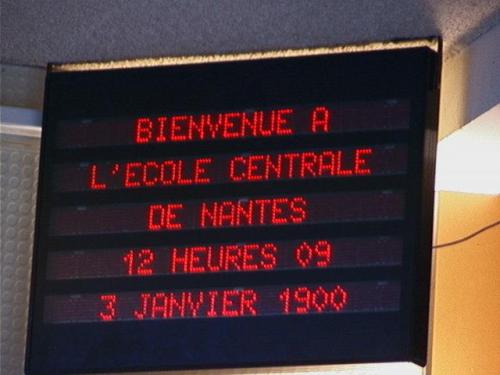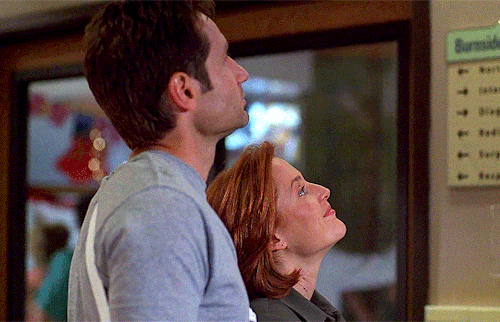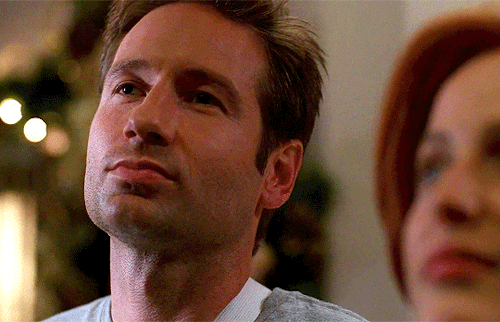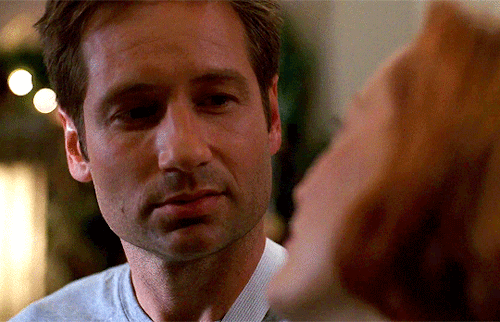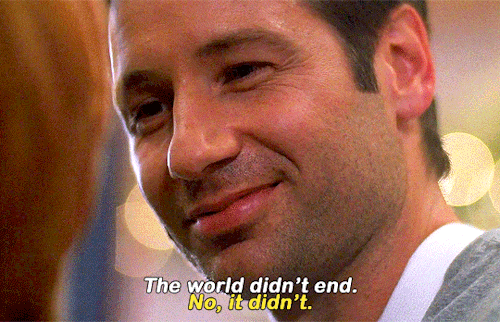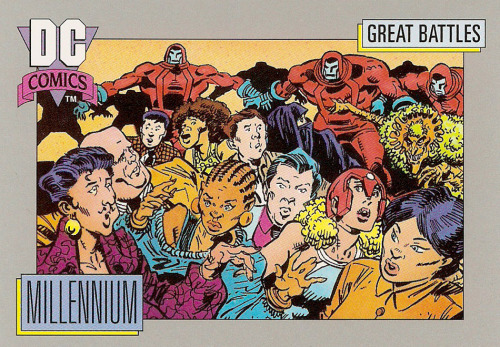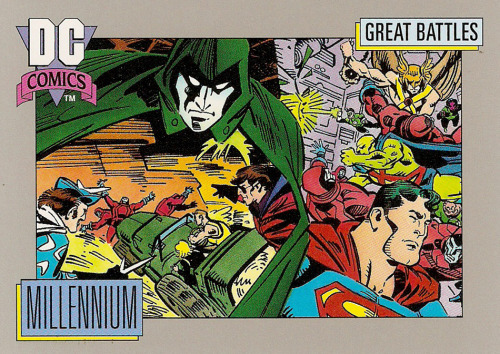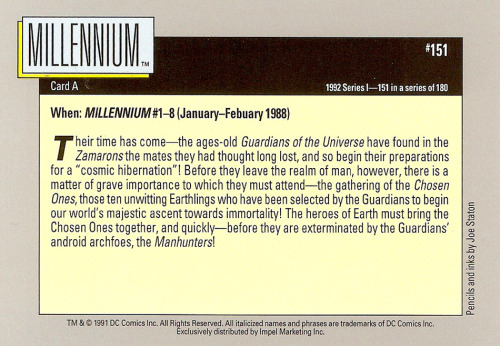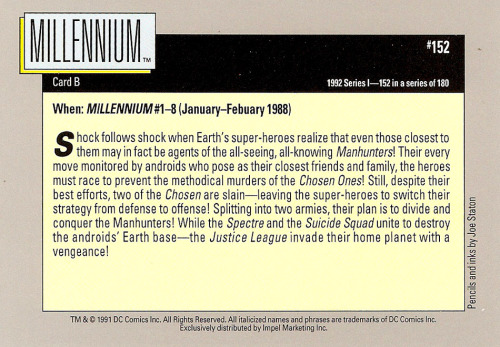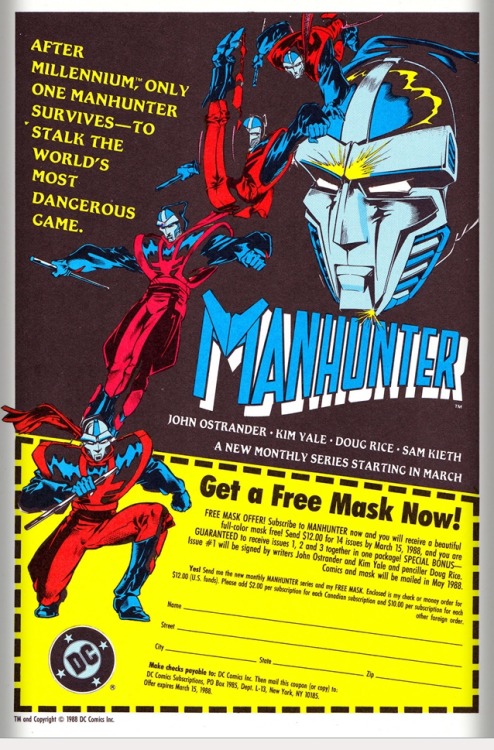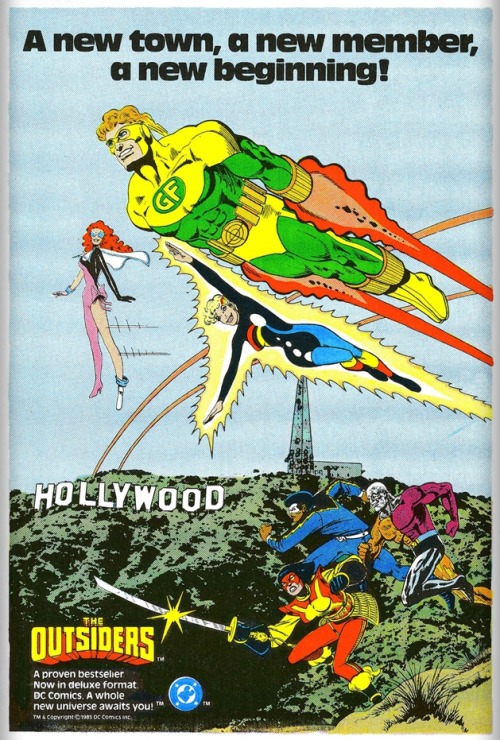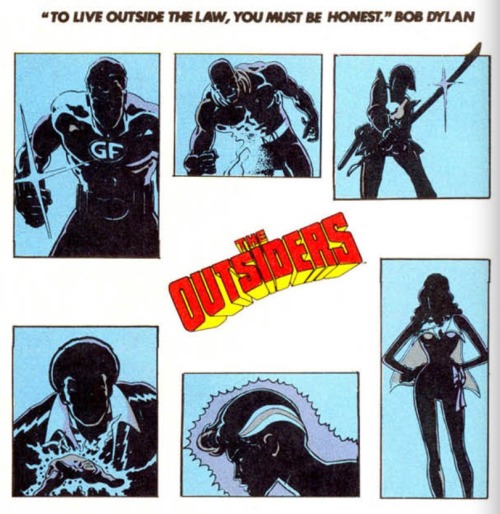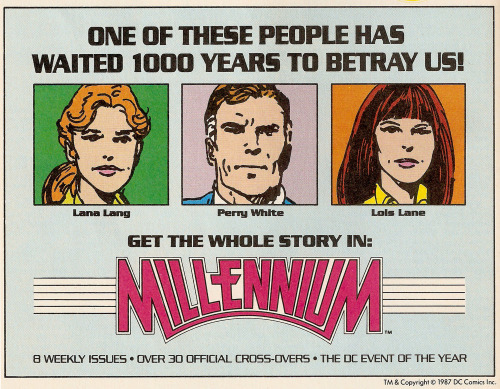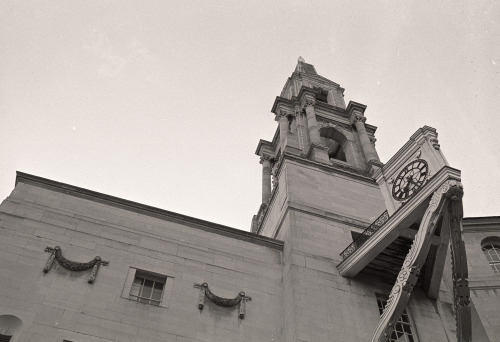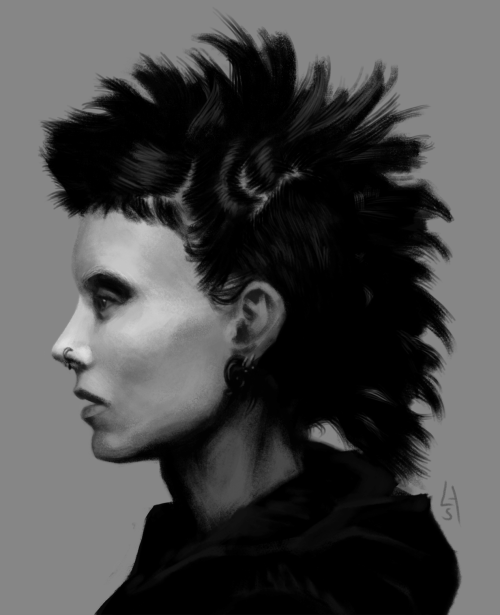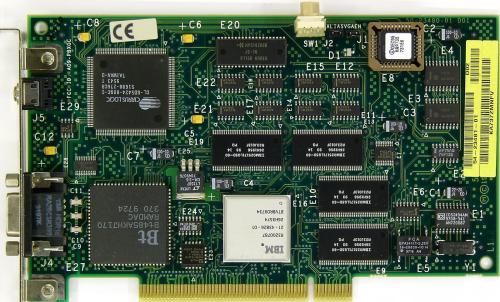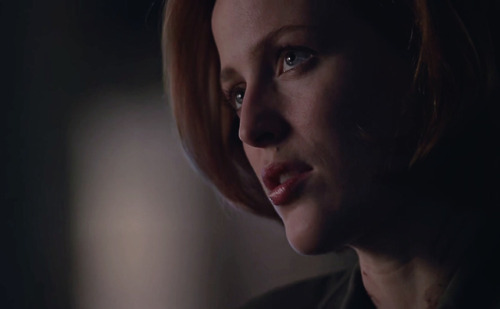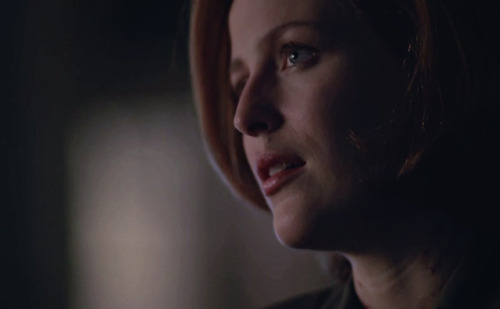#millennium
An electronic sign displaying the year incorrectly as 1900 on 3 January 2000 in Nantes, France.
Post link
IMPEL DC Cosmic Cards recounts the ballad of the Millennium saga
As a child of the 80s, I was a teen of the 90s. And as a teen of the 90s (living in middle-class suburbia), I had way more disposable income than any 14 year-old had a right to - so I spent my money on these: IMPEL’s DC COSMIC CARDS (INAUGURAL EDITION) released in 1991. This was no friviolous expenditure, you need to understand. This was about a decade before every household in North America would have access to the internet and if you wanted to know about a specific comic book character you either needed to A) own the comic book or B) have a really knowledgable friend who could tell you all about them. DC COSMIC CARDS were the cheaper, more convenient solution. (Actually, the most effective solution would be access to all six volumes of Who’s Who in the DC Universe - but let’s be reasonable here.)
In this example, some poor copy-editor needed to find a way to make Millennium sound exciting in three pragraphs or less. This is rather amusing, since Millennium is almost universally panned as one of the worst DC cross-over events to come out of the 80s. (I actually don’t agree with that - as a passive Green Lantern Corps fan, I find that the event has it’s own unique merits). The art on the front of the card doesn’t match up with the summary text on the back, and probably wouldn’t have really meant anything to anyone unless they’d read all 8 issues (and corresponding tie-ins) of the Millennium event first-hand. This particular 3-set of cards were illustrated by Joe Staton - the very artist who illustrated 1988’s Millennium event - so, that’s a nice touch of authenticity. I could be wrong, but I’m pretty sure this artwork was created specifically for these cards.
On card #1 we have the team that will eventually become The New Guardians surrounded by Manhunters. OK - check. Card #2 we have the Suicide Squad, the Justice League, some Green Lanternsandthe Spectre beating up on more Manhunters. The only recognizable Suicide Squadder on the card in Captain Boomerang - I had to really squint to recognize the Privateer and the other two driving the jeep (who’s names escape me at the moment). Card #3 is the real pièce de résistance: Guy Gardner cutting the head off of a Manhunter with a green knife construct. (Thankfully the Manhunters were robots, so this doesn’t really constitute as violence.) Staton would be the regular artist for the first 14 issues of Guy Gardner’s 1992 ongoing series (as well as it’s 3-issue Guy Gardner Reborn prequel) - so this is fitting. Guy Gardner rocketed to fame in the mid-to-late 80s as the anti-hero of the GLC and Justice League, and thus made him a “cool” character and I remember prizing anything I owned featuring Guy Gardner, so this card would not have been an exception.
It’s noteworthy that the IMPEL Cosmic Cards collection contained NO Batman-related characters (unless you count Nightwing - who was a major player in the Teen Titans at the time), but I’m sure we’ll delve into that some other time.
Post link
There’s been an unexpected hiatus in new posts due to… well… summer.
Get out there and try to enjoy yourselves. We’ll be back with new posts as soon as the miserable Canadian weather returns.
scene of the Green Lantern Corps chillin’ in the pool from Millennium #1 (1988). Illustrated by Joe Staton.
Post link
Teen Titans Spotlight On…
When one looks back on the 1980s comic book industry as a whole, the more observant reviewer will probably draw parallels between DC’s Teen TitansandMarvel’s X-Men - mainly for the fact that they were both ‘team’ books and hot properties for their respective companies*. Knowing a good thing when they saw it, Marvel created several spin-off 'X-books’ (i.e. X-Factor,Excalibur,New Mutants) throughout the decade. DC also had the same idea and the 80s saw various Teen Titans spin-offs such as 1982’s Tales of the New Teen Titans, 1984’s Baxter edition (set 1 year in the future from the current Tales of the Teen Titans series), and 1986’s Teen Titans Spotlight On…series.
InMarv Wolfman’s own words, the Teen Titan Spotlight On… series was inevitable as Wolfman had different characters he wanted to explore within the Teen Titans universe and he really couldn’t deviate from the story lines of the regular series to focus attention on any individual characters (at the risk of alienating the rest of the team). In my opinion, Wolfman did something brilliant with this series - as opposed to writing all of the issues himself, he had some of DC’s top talent write the issues (while he still retained creative control) - this allowed writers who were not normally affiliated with the Titans to bring a different perspective to the series. You can probably go ahead and call this an 'anthology’ series, due to the creative teams changing with almost every issue. For anyone who may be concerned - yes, George Perez still contributed covers to the series.
I’m kind of feeling this series was overlooked by the fans due to it being a spin-off and all. This is a shame, since if you are a Teen Titans fan/DC continuity hound like myself, this series is absolute gold. As mentioned, there’s lots of attention given to secondary characters who don’t normally get much characterization, so it’s always nice to see something like that. Due to space constraints, I’m basically going to give an overview of the highlights of this twenty-one issue series.
The series debuted with a two-issue Starfire story in which she tries to battle Apartheid (with a little help from a character who looks strikingly familiar to Nelson Mandela) written by Wolfman himself. The story dealt with real-word issues (concerns of social and political relevance injected into the story line) and Wolfman inserted a few subversive political statements, but the main goal was to raise political awareness about the war in South Africa. The first issue was not submitted to the Comics Code Authority for approval (contained crucial story elements that were in violation of code) and therefore does not have a CCA seal on the cover. These issues received a lot of press, as Apartheid and South Africa were all over the media in 1986. This storyline received mixed reviews from readers, but great attention from the media. Starting a new comic book series with a controversial story line was a very intelligent marketing move, Mr. Wolfman.Wolfman later went on to say that he did not wish for Teen Titans Spotlight On… to become “the relevant comic of our time”, and the series pretty much stayed away from topical issues after that.
A few lesser-known Titans get some attention in this series, namely Jericho (Deathstroke’s son), Aqualad, Wonder Girl, Thunder & Lightning, and Frances Kane/Magenta. Frances Kane/Magenta (who many fans compared to Marvel’sPolaris) became a recurring character in Flash v2 several years later. True story: Frances Kane’s superhero name, 'Magenta’, was pretty much invented on the fly by Barbara Randall,Tony IsabellaandWolfman before the issue went to print. Hawk (of Hawk & Dove) got a two-issue solo story written by Mike Baron that takes place sometime between the death of Don Hall (old Dove) and his introduction to Dawn Granger (new Dove). This series was not immune to the Millennium company event and had two cross-over issues: one teaming Aqualad and Aquaman together (written by Dan Miskinand Gary Cohn), and another spotlighting Harbinger written by Barabara Randall (as a direct tie-in to the New GuardiansseriesSteve Englehart was writing). An Omega Men spotlight issue was included (written by Todd Klein and illustrated by Erik Larsen) which took place after the Omega Men series had been cancelled. What’s the Titans connection? Starfire’s brother is a member of the Omega Men and the Omega Men were created by Wolfman. Fans loved the issue (gave them a sense of closure) and hoped it was a prelude to a new Omega Men series (or at least more stories). 'Nay’ to both.
Not sure if many readers remember, but the Doom Patrol were connected to the Teen Titans mythos (the connection being Changeling, who was the ex-patroller named 'Beast Boy’) and this became extremely prevalent in this anthology series. Aqualand battles ex-patroller Mento in a story by John Ostrander (and illustrated by Eric Larsen), the Brotherhood of Evil (who were originally Doom Patrol villains) get an issue to themselves and a Changelling/Robotman team-up (written by Paul Kupperberg and drawn by Dan Jurgens) served as a prelude to Kupperberg’s 1987 Doom Patrol series. Mr 104 (AKA Mr 103) appears for the first time in two decades in the Changeling/Robotman issue, only to be killed off for good later that year. (don’t call it a comeback)
There are three issues that really stand out above all the rest of the great stuff in this series, and I’ll tell you why:
Teen Titans Spotlight On… #13 (1987) was a Cybrog story written by J. Michael Straczynski that pitted him against Two-Face. During the 80s, the Teen Titans typically fought their own gallery of rogues (i.e. Fearsome Five, Deathstroke, H.I.V.E., Trigon’s forces, Blackfire and company, etc) so it was a pretty cool concept to have Cyborg battle a Bat villain. It gave a nice sense of continuity reminding readers the Batman and the Teen Titans all inhabited the same universe, and it was a great story to boot.
Teen Titans Spotlight On… #14 (1987) had Nightwing return to Gotham City to save Batman. This story was written by Micheal Reaves and featured one of Nightwing’s first encounters with Batman post-Crisis in DC. Yes, Nightwing did first appear in Tales of the New Teen Titans #44 (1984), but the 1987 Batman reboot kind of messed up continuity for Batman and affiliated characters, so while I’m not sure if this counts as Nightwing’s first 'official’ encounter with Batman, it seems to be a significant enough story for Nightwing fans to want to collect it. I’m not really 100% how many times Nightwing has met Batman for the first time in the DCU. If any Nightwing historians want to 'school’ me on this matter, I’d be happy to quote you. :)
The last issue of the series, Teen Titans Spotlight On… #21 (1988) was a throwback to the 1960s Teen Titans team (Robin, Aqualad, Wonder Girl and Kid Flash) where they kind of play as a 'mod squad’ to combat organized crime. Written by Mark EvanierandSharman Divono, it wasn’t a retcon, but it was inconsequential enough to be just slid in there and not really have any impact on Teen Titans history. Dan Spiegle illustrated this issue, and if you don’t know who Spiegle is, he’s the artist that illustrated a large variety of Gold Key Comics titles from the 1960s, giving this 1960s Teen Titans story an even more 'authentic’ feel.
Teen Titans Spotlight On… ended suddenly with issue #21. I say 'suddenly’ because there was no real fore-warning that the series was in any sort of trouble in regards to sales. Actually, it was teased in an earlier letter column that Raven would be having her own solo story in issue #22. The reasons given for the sudden cancellation was that Wolfman was too busy with other projects to keep overseeing this series, and the reason he was so busy was because other great Teen Titans projects were in the works (a new Titans team book, a Teen Titans graphic novel called ’Titans of Myth’ by WolfmanandPerez, and a Nightwing solo series). I seem to recall reading something about Perez stating that he no longer wanted to draw monthly issues of anything anymore, and that he would rather only draw Graphic Novels. None of these projects saw completion within the alloted time schedule, btw.
Other than the few negative comments about the Starfire/Apartheid story, fan reaction to this series was incredibly positive. Fans loved the concept and the line-up of writers and artists. There were many requests for Nightwing stories as well as Bat-girl (old Titans West character) stories. Oddly enough, this series generated a lot of hype for a Titans West series that never materialized. I’m thinking it had something to do with Hawk’s two-parter, which gave false hopes to fans that a Titans West revival was in the works.**
Doug Moench wrote a Wonder Girl story that fans felt was a real missed opportunity to explain the whole post-Crisis Wonder Girl/Donna Troy origin which Wolfman had been promising readers for the past 2 years. Could you really blame Moench for not wanting to jump on that grenade? I’m assuming Wonder Girl/Donna Troy’s elusive post-Crisis Wonder Woman connection was going to be revealed in the ’Titans of Myth’ graphic novel WolfmanandPerez were working on.
*In 1982, the New Teen Titans and the Uncanny X-Men even had an inter-company cross-over.
**It was, but never saw the light of day. Read the full story at http://www.titanstower.com/titans-west-that-wasnt/
Post link
Manhunter v1
The Manhunters (alien robots that served as antagonists to the Green Lantern Corps) originally appeared in 1977 and were created by Steve EnglehartandDick Dillin.
The ‘Manhunter’ concept actually pre-dates the Manhunters’ first appearance by three decades with Adventure Comics #72 (1942): a character named 'Manhunter’, created by Joe SimonandJack Kirby, who appears similar in appearance to the Manhunters EnglehartandDillinintroduced.SimonandKirby’s Manhunter (aka: 'Paul Kirk’) fell into obscurity around 1944 when various factors, due to a direct result of World War 2, caused DC comics to shorten the length of it’s publications.
The 'Paul Kirk’ Manhunter was revived* by Archie GoodwinandWalter Simonson in a 1973 back-up feature that ran in Detective Comics from issue #437 to #443 and was promptly killed off afterwards.
A new Manhunter (aka: 'Mark Shaw’) was introduced in DC’s 1st Issue Special #5 (1975) by Jack Kirby - but fan reaction did not merit 'Mark Shaw’ recieving his own ongoing series. Mark Shaw re-appeared in 1977’s Justice League of America #140 - #141 (in which EnglehartandDillin introduced the Manhunters) and tied Mark Shaw and Paul Kirk to the whole 'Manhunters’ mythos that Englehart created - a nice example of Englehart incorporating some previous continuity to tie everything together. Mark Shaw appeared in a few issues of Justice League of America in various incarnations during 1977 and pretty much remained in comic book limbo until John Ostrander gave Shaw his big break in the 1987 Suicide Squadseries.
Ostrander was drawn to Mark Shaw and the character’s quest to 'uncover his identity’ and decided to include him in a Suicide Squad story arc dealing with the inter-company Millennium cross-over (Suicide Squad v1 #8 to #10). The issues were well-received by fans and generated renewed interest in the character. It should be noted that the Millennium cross-over event spotlighted the Manhunters across every DC title being published at the time. Also, by this point, Goodwin/Simonson’sManhunter back-up feature from 1973 had achieved cult-like status among fans (and was reprinted as a Baxter edition in 1984). Thus: a combination of the Millennium event, the demand for the Goodwin/Simonson Manhunter reprint and his appearance in Suicide Squad created the 'perfect storm’ of interest to allow this character to receive his own ongoing series. It was originally planned as a 4 issue mini-series, but became an ongoing series thanks to fan response.
While the series *could* be considered an unofficial Millennium spin-off, I’m sure it’s creation had more to do with Ostrander’s treatment of the character in the pages of Suicide Squad rather then the cross-over event itself. This is relevant, since it’s Ostrander and (his wife) Kim Yale’s scripting and writing of the Manhunterv1 series that makes it so enjoyable to read. At the time, Ostrander was writing 3 other DC titles (Suicide Squad,Deadshot, and Firestorm) and it wasn’t unusual to have supporting characters from one series featured in another. For example, the first issue of Manhunter has Mark Shaw apprehending Captain Cold (a Flash rogue) who ends up joining the Suicide Squad in the following month’s Suicide Squad (issue #16). It’s the tight cohesion of these four titles that made these series’ so enjoyable to read - almost like a mini-Ostrander universe (Ostraverse?) that only you are privy to. Another example: shortly after Count Vertigo appears in Manhunter v1 #7 does he become a member of the Suicide Squad in Suicide Squad#24.
TheManhuner series was brilliantly written as a detective/espionage thriller. The premise of the series is: Mark Shaw, in an effort to make money and clear the Manhunter name, decides to use his abilities and powers (a bionic face mask and a high-tech baton) to hunt down and capture escaped super-villains at large. Essentially, Mark Shaw is a soldier of fortune who only targets meta-criminals. This was a great excuse to feature a lot of super-villains from other titles - which Ostrander/Yale take full advantage of - we have appearances from the Penguin, Captain Cold, Catman, Dr Alchemy, Count Vertigo, Kobra, and a thug in a LexCorp battlesuit throughout the series. Mark Shaw *did* have his own personal antagonist named Dumas, but he was killed off at the end of the first four-issue story arc (much to the dismay of the fans). Ostrander/Yale ensured that there were lots of references to the current happenings of the DCU in the series, and the Invasion! inter-company cross-over event played a huge part in this series. This series also played a bit part in the Janus Directive cross-over that ran between a few DC titles in 1989.
For the most part Ostrander/Yale gave the fans exactly what they wanted: when fans requested an issue where the story is told from a villain’s point-of-view, they got it in Manhunter #16. When fans wrote in to request a Mark Shaw/Batman team-up, they received one in issue #17. Fans wanted more integration with Ostrander’sSuicide Squad title, and they received a few cross-overs with the title.
One of the things that really stands out about this series is that it is written in such a way that you get a lot of insight into the thinking of Mark Shaw - which allows the reader to identify him as an 'everyman’ and thus feel some sort of connection with him. My favorite story arcs from this series were issues #10 - #12 (which featured a big 6-way battle with guest stars galore that was laugh out loud funny) and issues #8 - #9 (which tied in with the Flash v2 #21 and #22 in a very unique and clever way).
All 24 issues of Manhunter v1 were written by John OstranderandKim Yale (and often Yale would write an issue on her own). Doug Rice was the regular penciller up until issue #15 when Grant Miehm took over regular pencilling chores. During Rice’s run there were quite a few fill-in pencillers (Kelley Jones, Mary Mitchell, Pablo Marcos) because it took Rice longer than a month to pencil an issue. Back-up features were also included in order to get the issue to print because often the main feature wasn’t 100% completed before deadline. Sam Keith pencilled and inked a back-up feature in issue #12 which, upon closer examination, is probably the precursor to him developing his artistic style that he would end up using in his 1993 The Maxx series (from Image comics).Keith began inking the first few issues of Manhunter, but was quickly whisked away and assigned to work on Neil Gaiman’sSandmanbefore the first four issue story arc was completed.
As previously mentioned, the Manhunter v1 series lasted 24 issues (no annuals and no specials) and, while being a hot concept with lots of fanfare at the beginning of the run, by the second year interest in the title had waned. As a matter of fact, Miehm became the new regular penciller (replacing Rice) completely aware that the series would be cancelled. Unlike most ongoing series’ that are cancelled abruptly, Ostrander/Yale had the luxury of ending Manhunter v1 with plenty of time to conclude the book at their own pace. Due to popular demand, Dumas made a return to the series and was the main antagonist in the 6-part “Saints and Sinners” story arc that was more or less the death rattle of the book. The last 7 issues of the series were spent taking Mark Shaw back to his 'roots’, resolving his romantic life and basically providing a resolution to the series. Mark Shaw would appear a few more times in Ostrander’sSuicide Squad before being killed off in Eclipso #13(1993).
There are a few major themes running through this book, some obvious (ex: Mark Shaw’s search for identity/redemption) and some not so obvious (ex: Ostrander/Yales fixation with masks - allegorical or otherwise), but a theme most people seem to glaze over is the major undertones of Japanese culture predominant in this series. Just to further that last point: the entire series is more or less a 'martial arts’ book, a few adventures take place in Japan, Mark Shaw’s costume/mask/baton appear to be a homage to the costumes Kabuki actors wore and the warrior code of the samurai is a recurring idea that keeps cropping up throughout the series. Most people aren’t aware of this, but OstranderandRice had collaborated prior to this project on a series called Dynamo Joe that was published by First Comics from 1986 to 1988. Dynamo Joe was a 'giant robot’ series (akin to Voltron/Robotech) and it was no secret that Rice was a Japanese magna fan (Manhunter v1 #10 - 12 appear to be a throwback to the Dynamo Joe series, also the fusion of martial arts and high tech devices - bionic mask and high-tech baton - just screams 'japanime’). Ninjas were very trendy in North American pop culture during the 1980s, so this would all tie together. Yale even goes so far as to list the book 'Yakuza’ by David E KaplanandAlec Dubro as a valuable reference for the series.
Great premise, great writer(s), great series. Highly recommended.
*Originally there wasn’t meant to be any connection between the Goodwin/Simonson Manhunter and the Simon/Kirby Manhunter. Apparently, it was a last minute addition made for continuity convenience.
Post link
The Outsiders v1
In 1984, the Batman and the Outsiders ongoing series was considered to be successful/high profile enough to merit a Baxter version of itself. The new plan was simple; starting November 1985 the Outsiders would now have 2 books coming out per month: a direct edition (which would be in Baxter format, sold directly to comic book shops and contain no Comics Code Authority seal) and a newsstand edition. In order to keep the comic buying fans enticed, it was planned that the Baxter format (named the Outsiders v1) would be set 1 year ahead of the current Batman and the Outsiders storyline, meanwhile the newsstand edition (now renamed to Adventures of the Outsiders v1) would resume the current Batman and the Outsiders storyline and eventually lead into the new Outsiders v1 stories. Teen Titans also did something similar with it’s direct edition (The New Teen Titans v1) and it’s newsstand edition (Tales of the Teen Titans v1).
When a Batman and the Outsiders fan picked up a copy of the new Outsiders v1 #1 they were confronted with two surprises: 1) the introduction of a new female teammate called ‘Looker’ and 2) the sudden absence of Batman. There were a few minor alterations to the team (ex: Geo-Force gets a new yellow and green costume, Halo gets a new hair-do, team has been relocated from Gotham City to LA, etc) but for the most part writer/editor Mike W Barr scripted the new series in such a way that little clues were dropped but readers were encouraged to pick up the newsstand edition to get the full story of why things were the way they were. Mike W Barr had his work cut out for him as he was editing/scripting both Outsiders books and coordinated the story/plot lines to ensure they never crossed each other/unraveled anything continuity-wise (or spoiler-wise).
I mentioned a new character named 'Looker’ who was, in fact, designed by Mike BarrandJim Aparo for this series. When Batman’s absence left a void in the roster,Barr literally thought to himself “what powers don’t the Outsiders cover?” and realized none of them had psychic/mental powers - thus, Looker was born.
Batman being a part of the Outsiders was a huge 'draw’ for readership. With Batman gone, Barr had his work cut out for him to keep readership high. It didn’t hurt that Jim Aparo migrated from Batman and the Outsiders to be the regular penciller on the new Outsiders book. A lot of fans stuck around for the new Batman-less team just for the Aparo artwork. Thankfully, Barr made up for the lack of Batman with some superb writing.
Calling a series a 'definitive 80s comic’ is not a recognition I dispense out generously, but Barr really went out of his way to ensure that the Outsiders was a comic book intended for an 80s audience. During their entire 26 issue run, the Outsiders deal with: cold war paranoia, covert US government operations, white collar crime, materialism, nuclear scare, the US energy crisis, and charitable campaigns that raise money for starving Africa. A lot of 80s pop culture references are also littered throughout the series. This series was like an 80s time capsule.
Barr put a lot of effort into the characterization of the individual team members - most issues had a back-up tale that featured one or two Outsiders (sometimes it was a parody story, sometimes it was just to explain how a certain character’s powers worked). While the back-up tales were written by Barr, it wasn’t uncommon to find some of DC’s top talent (i.e.: Steve Lightle, John Byrne, Gerry Ordway) illustrating these stories. Barr would add two more characters (Windfall and the Atomic Knight) to the Outsider’s roster before the series ended.
While reading this series, it becomes a little obvious that not all Outsiders were created equally and a few team members get a bit more exposure than the rest. While Geo-Force (as the alpha-male heavy-hitter) and Halo (the one that younger readers can relate with) get a lot of attention, I’d say the real head-liner would be Looker (a character created specifically for the series). Actually, I’d go so far as to rename the series as 'The Tale of Looker’ since she debuts in the first issue and her saga concludes in the series finale.
There are a few things about this series that may have flown under the radar for the casual comic book reader:
- Batman villain Firefly (Garfield Lynns) is re-introduced as a costumed super-villain who uses lights and illusions to battle his foes (in contrast to the pyrotechnics he is known for).
- the first appearance of Bad Samaritan. If I was one of those people who looked for deeper meaning in everything, I’d probably theorize that Bad Samaritan was meant to be a personification of the US governmentt’s clandestine covert operations.
- the first appearance of The People’s Heroes - Russia’s premiere super-team.
- the re-introduction of Batman villains Zebra-Man and Planet-Master as members of Kobra’s strike force.
Batman rejoined the Outsiders in issue #17 (1987), but that wasn’t enough to prevent the series from being cancelled. The Outsiders came to an end during a Millennium cross-over in issue #28 (1988). I’m assuming that the Outsiders were probably on the cancellation block due to low sales for about 5 months prior to the last issue, as Barr was slowly setting the scene for the inevitable conclusion of the team. Case in point, during the last 7 issues, the Outsiders: have their HQ destroyed, are hunted by US armed forces fro being enemies of the state, have a core member revealed to be a traitor, and lose three members (one becomes de-powered, one goes into a coma, and one is killed). Erik Larsen pencilled the last two Outsiders books. Mike CarlinreplacedMike Barr as editor of the series at issue #22, and then Andy Helfer became the regular editor by issue #24.
The Outsiders series was revived by Mike W BarrinThe Outsiders v2(1993).
House ad #1 was released as a promo poster in 1985.
Mike Barr was nominated as a favorite writer for the 1985 Comic Buyers Guide Fan Awards.
Post link
Millennium cross-over event
Millennium was DC’s third inter-company cross-over (preceded by Crisis on Infinite EarthsandLEGENDS, respectively). If the goal of Crisis on Infinite Earths was to sort out its continuity issues and the goal of LEGENDS was to re-establish the DCU, then I’d theorize that the goal of Millennium was to flesh out the characters and relationships within the DC universe.
The entire 56-issue Millennium event took place over a two month publication period (Crisis took about a year and LEGENDS took 7 to 8 months). Millennium itself was an eight-issue mini-series released on a weekly basis (each issue labelled as ‘week 1’, 'week 2’, etc…) that acted as a overview of the event - readers were encouraged to read all of the tie-in issues that ran through the DC titles to understand what was going on between the weekly installments of Millennium. This cross-over event was all-encompassing and seemed to involve all of the most popular DC titles at the time (ex: all Batman titles, all Supermantitles,Flash,Wonder Woman, whatever series Green Lantern was starring in, Legion of Super-Heroes, etc). Mega cross-overs involving all titles were still a relatively new gimmick at this point in time and DC was still testing the waters.
The Millennium mini-series was handled by the creative team of Steve Englehart,Joe StatonandIan Gibson. Prior to being assigned Millennium,EnglehartandStaton had raised the sales of tepid selling Green Lantern v2 to heights previously unseen in the publication’s history. Actually, the whole concept of Millennium was inspired by a plot device Englehart had used in Green Lantern v2 #200 (1986) in which the Guardians task the Green Lantern Corps to protect Earth because it would be an ideal breeding ground for immortals in the next thousand years. The Millennium storyline was centered around the Guardians of the Universe’s efforts to evolve human beings to the next level, and the Manhunters who were trying to oppose them. As it happens, Englehart co-created the Manhunters and introduced them to the DC Universe back in Justice League of America #140 (1977). The Guardians of the Universe (said to be originally modeled after David-Ben Gurion) were originally created by John BroomeandGil Kane, but it was Englehart who (while writing Green Lantern) had managed to tie the Guardians in with a mega cross-over event (going so far as to reveal the Guardians as the original cause of the Crisis) thus solidifying their involvement in all things cosmic in the DC Universe. [I remember hearing a rumor that editor Andy Helfer (who helped coordinate with the other DC writers while Englehart worked from his California home) retired from comics after this cross-over event due to all of the stress involved (he also edited the LEGENDS cross-over). However, I know that Helfer went on to edit several more DC titles before becoming editor of Paradox Press, so I don’t think there’s any truth to that rumor.]
If one were to breakdown the plot of Millennium into 4 acts, they would be:
- Act 1: heroes discover there are traitors/Manhunters among them
- Act 2: heroes rally and attack Manhunters’ earth forces
- Act 3: heroes attack Manhunters in space
- Act 4: heroes attack Manhunter HQ at center of world
It was the first act that caused the biggest commotion with the writers at DC comics - not only were they mandated by the 'higher ups’ at DC to work the Millennium event into their storyline, but they also had to select a supporting character to be revealed as a Manhunter in disguise. As you can see in the above ads, the whole idea of who will be revealed as a traitor was a major part of the marketing campaign. To their credit, it was left up to the writers to decide who the traitor would be. Some writers really went out of their way to make their series work with Millennium(ex:John Byrne who seamlessly integrated the Millennium event into his 1988 World of Smallville Superman origin retcon mini-series, Roy Thomas who took the opportunity to retcon the origins of the Dan Richards and Paul Kirk Manhunters in a way that was consistent with the Millennium storyline, and Paul Levitz who probably received a lot of hate mail from fans when he revealed who the Manhunter in the Legion of Super-Heroes was), and other writers easily modified their story lines so that it had something to do with Millennium(ex:George Perez and his “Challenge of the Gods” in Wonder Woman,Mike Baron reveals the traitor in Flash in a way that would make logical sense in hindsight), while other writers seemed to glaze over it completely (ex: Keith Giffen’sJustice League International traitor is quickly replaced with a carbon-copy duplicate and has no effect on the series). A few characters appeared for the first time during these tie-ins, but were not directly involved with Millennium - these included G'Nort (Justice League International #10) and the post-Crisis Toyman (Superman #13). The FirestormMillennium tie-ins mainly involved Firestorm dealing with the evolution of his powers.
I previously mentioned that all of the major DC titles were involved in this cross-over, however a few were actually left out. These included:
- Swamp Thing,Vigilanteandthe Question (Because they were 'mature reader’ titles, and DC didn’t think it was wise to include them in a cross-over event that was targeted to general audience members. Yet The Spectre was included? Interesting.)
- The Teen Titans (At the time they were doing that 'direct edition/newsstand edition’ thing where one set of stories would have to be set 1 year in the future. Just a major continuity headache to figure out.)
- The Warlord (DC had promised fans that after LEGENDS they would never do another Warlord/DCU cross-over story due to negative fan reaction)
Millennium led to the creation of two new spin-off titles in 1988: the New GuardiansandJohn Ostrander’s the Manhunter. Likewise, Millennium saw the end of the Outsiders v1andBooster Gold v1, but the sales on these books were already dwindling - so in essence Millennium was just a convenient plot device they could use to wrap things up. (Blue Beetle would also be cancelled shortly after his Millenniumtie-in.)
Another thing that Millennium is infamous for is featuring the first gay super hero in the DC universe. I say 'infamous’ because the character is so poorly-written and stereotypical that he may have set the gay movement back 10 years. Extraño was a Peruvian magician who was empowered by the Guardians and made to become a member of the New Guardians. Englehart was panned by the gay community for his portrayal of the offensively flamboyant character, often receiving mail that went along the lines of “I am gay and that character should in no way shape or form act as a reference of what a gay person is like”. You need to remember that Englehart (for whatever reason) was not allowed to come out and say the character was gay, so he had to push the theatrics to the extreme so that the readers could pick up on it. For all it’s worth, Englehart really tried to introduce a gay super-hero into DC comics.(more on this some other time)
AfterMillennium, DC comics wanted to move Green Lantern to the new Action Comics weekly series (in an effort to generate interest in the new Action Comicsformat).EnglehartandStaton declined, since they didn’t want to be confined to a 7-page weekly format. Green Lantern Corps (the book EnglehartandStaton were working on) lasted a few more issues afterMillennium and was then cancelled.
I really enjoyed this cross-over event. Over time I have managed to find all 47 tie-in issues (discount bin hunting at comic book shops) and I absolutely do not regret it. This was the absolute BEST TIME EVER to read DC comics: we had John Ostrander’sSuicide Squad, Batman was teamed with Jason Todd Robin, the Superman books had just been rebooted by Byrne,Thomas was writing Young All-StarsANDInfinity Inc., Wally West Flash had just taken over Barry Allen’s title, Keith Giffen’s Justice League was at some of it’s best moments, George Perez’Wonder Woman was just revving up and the Legion of Super-Heroes was going strong. DeMatteis’ new Dr FateandMike Grell’sGreen Arrow even make a few appearances. I especially liked the Secret Origins tie-ins (re-explained and retconned numerous origins to characters in a way that seemed to flow effortlessly with Millennium and the new DCU) and Teen Titans Spotlight issues (which took the time to feature characters that didn’t really fit anywhere else but were important to the story regardless). I really like how this cross-over was able to incorporate a lot of elements from the Crisison Infinite Earths while still bringing something new to the table. I didn’t get why DC decided to expose all of the Manhunter traitors in the first issue of Millennium - I think that had they let the suspense build up for longer the result could’ve been more entertaining.
This event deals heavily with the idea of humanity evolving, which apparently is a theme Englehart likes to explore. Astute comic readers have drawn parallels between MillenniumandEnglehart’sCelestial Madonna storyline that ran in various Marvel comics’ Avengers books from 1974 to 1975.
*Dan Richards was the alter-ego of a Quality Comics character called the Manhunter first introduced in 1942. Coincidentally, DC also had a character called the Manhunter (alter ego Paul Kirk) who debuted one month after Dan Richards did in 1942. DC bought the rights to the Dan Richards Manhunter in 1956 when Quality Comics went bankrupt.
Post link
MILLENNIUM 4!!! I can’t wait to see Lisbeth Salander kick some asses!!!
#millennium #millennium4 #stieglarsson #book #books #bookstagram #boek #libro #read #reading #sunday #afternoon #weekend #relax #lovebooks #home #homesweethome #qualitytime #goodtimes #happy #decor #lazyday #chill #chillout #lecture
Post link

Good Evening Earl by Kristine Rose
DEC PowerStorm 3D30 / TGA2 (March 1996)
PowerStorm 3D30 was an early low-cost 3D accelerator from Digital/Compaq. It cost just $795 and offered up to 1280x1024 in 256 colors (this was the maximum for all resolutions). Most of you presumably don’t know the card, because you could not find it in a standard PC. It was designed for DEC’s workstation based on Alpha CPUs. There is very little info about it (often not even correct) so I decided to consolidate all I know about it. This is what I know and what I was able to measure on a real hardware (thanks to Kyle Fox):
Basic description
The card uses the standard 32-bit PCI interface and contains three big chips. Cirrus Logic CL-GD5424 is an SVGA chipset and has its own 256kB of memory (16-bit). Its purpose is just to provide VGA compatibility during boot, before a graphic driver is loaded by the OS. There is even a switch on the card that can disable it (for multi-monitor solutions with multiple cards).
The Bt485A chip is a 170MHz true-color RAMDAC that has a standard input pixel port together with a separate VGA input port. Thus, it allows a cheap way to connect both graphics chips to a single monitor output and switch between them.
The main chip (“TGA2”) is the silver one manufactured by IBM (and designed by DEC). It’s a graphics controller with support for 2D, 3D and limited video acceleration. In this particular card (3D30), it has only 2MB of video memory, which cripples the maximum color depth to just 256 colors (PowerStorm 4D20 with the same chip supports also 12-bit and 24-bit modes).
In 2D/video, it offers standard BitBLT operations, YUV-RGB conversion and a very primitive 1-D video scaling with filtering (yes, hardware does the job only on horizontal axis; vertical scaling is handled by the CPU). There is no support for multiple 256-color palettes, which means that the video is converted to colors available for the whole desktop.
3D acceleration
The chip supports following features in hardware:
- Double-buffering (contrary to SGI, the back buffer is stored in off-screen memory and copied once the frame is complete)
- Z-Buffer (including the necessary depth operations)
- Line and polygon drawing (wireframe, solid, smooth-shaded) … contrary to several sources the chip is not limited to just wireframe drawing
- Color dithering for 8-bit and 12-bit color modes
- Fast color interpolation (for Gouraud shading)
Thus, there is no support for alpha-blending (transparency effects), fog and textures. Don’t expect playing GLQuake-like OpenGL games on this. The chip’s targets are 3D modeling/simulation and CAD/CAE.
DEC decided not to integrate geometry unit (transform & lighting) known from hi-end professional cards of the era and let the powerful Alpha CPU do the job.
We have tested the card under Windows NT 4.0 using our GPUbench program running under FX!32 emulation (fortunately, most of the tests generate very little CPU load so this doesn’t affect the results and the graphics driver runs as native code). This is one of very few cards being able to accelerate 3D in 256 colors with Windows.
The driver is limited to OpenGL 1.0.1 with extensions for vertex arrays. Unlike NT4 drivers for Matrox Millennium I/II and ATI Rage II cards, this driver is full ICD (installable client driver) so it handles the whole rendering pipeline. Early ATI and Matrox cards used MCD (Mini-Client Driver), which is basically a modification of the Microsoft’s OpenGL software renderer, where you can accelerate just the features available by the card (for example only untextured polygons). The issue with MCD is that you cannot accelerate the geometry processing. On the other side, MCD allows you to use even the features that are not supported by the card. DEC’s ICD driver completely ignores textures and does software emulation only for alpha-blending.
Having OpenGL acceleration in 256 colors brings color palette issues. The driver expects RGB 332 palette by default and if the application doesn’t handle this, colors will be wrong (OpenGL applications often didn’t care as they assumed at least 16-bit colors).
Performance
- Rasterisation speed is surprisingly good with 69 Mpix/s (millions of pixels per second) with smooth-shaded (untextured) polygons. This decreases to 38 Mpix/s when Z-Buffer is enabled. This allows the card to render 60 fps in 640x480.
For comparison with other cards (with enabled Z-Buffer): 50-MHz S3 Virge = 24 Mpix/s and 48MHz ATI Rage II+ = 21 Mpix/s, Matrox Millennium = 32 Mpix/s, SGI O2 = 56 Mpix/s, SGI Indy XL/XGE = 9 Mpix/s, SGI I2 Maximum Impact = 240 Mpix/s - Geometry pipeline can handle up to 606,000 vertices/second (516,000 with Z-Buffer) in a form of triangle strips or 329,000 independent triangles/second (291,000 with Z-Buffer).
This is about 30-50% of UNIX hi-end and about 80% of PC workstation hi-end. Geometry performance is comparable with SGI O2(300MHz MIPS R5200 with vector units; 1998). Consumer cards in a Pentium MMX 200MHz PC could handle no more than 100,000-200,000 vertices/second and 40,000-70,000 independent triangles/s (with enabled Z-Buffer) - Alpha-blending done in software causes significant performance drops to just 1.4 Mpix/s. If it’s possible, it is better to avoid this feature and use stipple alpha instead.
Verdict
It seems that this was a good low-cost choice for powerful universal technical workstations. Geometry performance was especially good thanks to the power of Alpha CPUs, which made it a better choice over SGI’s low-end (Indy), until SGI O2 was released later that year. O2 was better was heavy 3D applications, but didn’t offer that good CPU performance.
Even with the Alpha-based workstations (like the Digital Personal Workstation 500a we used for this testing), there were other options for 3D acceleration. You could buy the same graphics chipset with 16MB ($2,495) to get full true color (32-bit or 12-bit for fast double-buffering) or go even higher for DEC’s rebranded Intergraph solutions (RealiZm Z13 with support for textures; $8,000).
In the low-end, Matrox Millennium I (MGA-2064) was a supported 3D accelerator. It offered better color precision (up to 32-bit in 3D) and 30-40% worse geometry performance.
Additional resources: Full GPUbench results,Open3D release notes,Video capabilities of TGA2 in Digital Technical Journal,Infoworld
Post link
Happy New Year
Millennium Furby V1 tested and working brand new condition removed from his box to test, comes with the box and manuals up for adoption on my Etsy
.
.
.
#furby #furbyforsale #furbyfandom #furbycommunity #furbymillennium #y2kfurby #millenniumfurby #millennium #millenniumfurbyv1 #furbyshop #thefurbyqueen #furbylove #furby1998 #1998furby #1999furby #furby1999 #safefurby #allfurby #etsy #etsyshop #etsyseller #smallbusiness #shoplocal #shopsmall #vintage #vintagetoy #90stoy #nostalgia #electronictoy #interactivetoy
https://www.instagram.com/p/Cdq1VfBp7dZ/?igshid=NGJjMDIxMWI=
Post link
Konungar: War of Crowns #1 (of 2)
Writer: Sylvain RunbergArtist: Juzhen
Publisher: Titan Comics
Imprint: Statix Press
FC, 64pp, $5.99, On sale: June 13, 2018
Gorgeously rendered epic fantasy from the writer of Titan’s Millennium series - Sylvain Runberg!
Two sons at war in a battle for the throne that has torn their country apart. Taking advantage of this conflict, the Centaurs, mortal enemies of the Vikings, have declared war. To combat this ancient foe, the two brothers must put aside their differences for the good of their people.
Fans can order this issue through their local comic book store. To find out more information on how to order your copies, visit: https://titan-comics.com/faqs/how-to-order/
Post link

